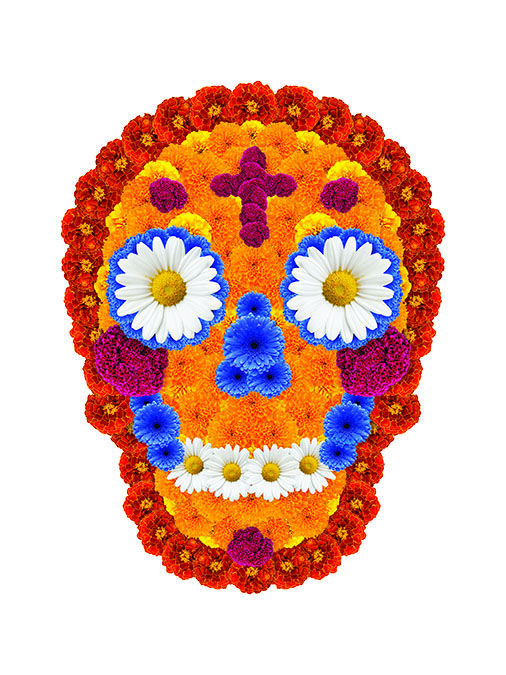In the 10th century, St. Odilo of Cliny established a memorial to all the faithful departed. The feast was added to the Church calendar in the 13th century.
All Saints’ Day is dedicated to those Catholics who demonstrated exceptional faith. All Souls’ Day is a day of remembering all those who have died, not just the “spiritual superstars.”
The feast is not only a memorial, but a reminder that we are all finite, mortal creatures. Even though we all face death, as Catholics, we know that not even the power of death can separate us from God’s love.
In last year’s Angelus address for the Feast of All Souls, Pope Francis reminded the audience that practices of remembering the dead, including caring for their graves and offering intercessory prayers, testify to the “certain hope” of the “certainty that death is not the last word.”
Additionally, he said, praying for the departed is part of the tradition of the Church, Catholic News Agency reported. Pope Francis also said these prayers are “the best spiritual help we can give to their souls, especially those who are most abandoned,” according to CNA.
rnAltars and ofrendas
In Aztlan: A Journal of Chicano Studies, Adrían Arrancibia writes that “Day of the Dead, like many holidays, incorporates the iconography and practices of both ancient and modern cultures.” In this case, Day of the Dead (or Día de los Muertos) “is a colloquial term for the period of All Saints’ Day and All Souls’ Day,” combining Catholic celebrations with pre-Columbian indigenous rituals meant to honor and pay tribute to one’s ancestors.
These activities include visiting and cleaning family graves; attending Mass; and holding candlelit cemetery vigils to welcome souls of departed loved ones.
Home and cemetery altars are also built to honor the deceased. Regina Marchi, associate professor at Rutgers University, has written about Día de los Muertos in the U.S. and Mexico. These altars have pre-Columbian roots “as harvest offerings or ofrendas for the deceased,” Marchi writes.
She characterizes them as “often laden with pan de muerto (bread for the dead), salt, grains, fruits, vegetables, legumes, coffee, soda pop, alcoholic beverages, special dishes (such as tamales or mole), mementos and photos of the departed, candles, and Catholic iconography (such as crucifixes and images of saints). Tables, shelves or crates are used to create multileveled altars, often crowned with large arches or frames (said to be gateways to symbolically welcome the traveling spirits home) overlaid with marigolds and hanging fruits.”
Pan de muerto is both placed on the altar as an offering to the dead and eaten by the living in celebration of Día de los Muertos. The sweetbread is baked in a circle, representing the circle of life.
It is often decorated with bone-shaped pieces on top. The sweetness of the bread serves as a reminder that visiting gravesites and building altars for the deceased is a celebration of their lives.
Often Día de los Muertos altars are set up on multiple levels, signifying the underworld, Earth and heaven. A mat is sometimes laid out, so that the dead can wipe their feet (dirty from their graves).
The entire altar is meant to be a hospitable place for the spirits to visit with their loved ones after being separated from them — the altar is essentially the site of a welcome home party. That is why it is important to include the favorite food and drink of the deceased, and pictures of them — to indicate the altar is the seat of honor.
The most prominent and recognizable symbol of Día de los Muertos is the calavera (“skull”). White sugar skulls adorned with bright foils and colorful icing are internationally recognized symbols of the holiday, and Mexico more generally.
Marchi writes, “With humorous expressions that mimic the living and mock everyday behaviors, these skeletal images are said to remind the living of the brevity of life and inevitability of death.” She also notes that white skull imagery was popular in Spain and other parts of Europe between 1400-1800s.
Another recognizable symbol of the holiday is Aztec marigold flowers, a species of marigolds native to the Americas. Cempas√∫chitl in Nahuatl, it is also called flor de muertos (“flower of the dead”). They grow and wilt quickly and evoke the fleeting nature of life on earth, and the strong fragrance of the marigolds and incense are meant to help guide the dead to their altars.
rnA changing tradition
Before the 20th century, Day of the Dead was mostly observed in rural parts of Mexico. In her book, “Day of the Dead in the USA: The Migration and Transformation of a Cultural Phenomenon,” Marchi examines the importance of the holiday to post-revolution Mexico’s nation-building project and argues that the holiday was promoted throughout the country to serve the needs of the government and commerce.
Today, “As the largest Latino festivity in the U.S., Day of the Dead brings positive media attention to Latino culture in a variety of forms,” Marchi claims.
Moreover, “the popularizing of the holiday has allowed people of many different ethnicities to engage issues around death, a significant contribution in a U.S. consumer culture that features ever-greater distancing from the realities of death,” Arrancibia writes.

